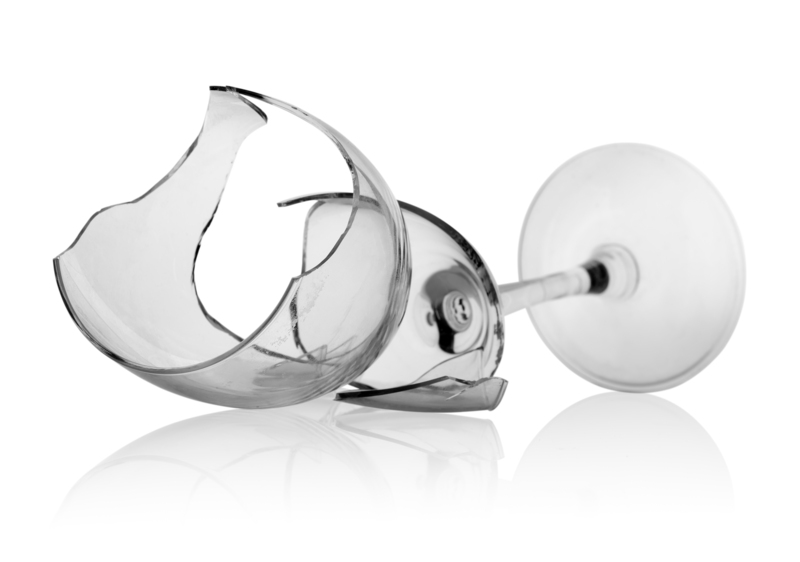Prevent Sofa Damage: A Pro's Guide to Long-Term Storage
Whether you're remodeling, moving, or simply need extra space, safeguarding your sofa during long-term storage is crucial to preserving its appearance and comfort. Storing a couch incorrectly can result in costly and irreversible damage, including fabric tears, odors, warping, and infestations. As upholstery experts, we've put together this thorough guide bursting with professional tips and best practices to help you prevent sofa damage and keep your beloved couch in "like new" condition for years to come.
Why Proper Sofa Storage Matters
Your sofa is more than just a piece of furniture--it's the heart of your living space, providing relaxation, style, and comfort. Long-term sofa storage presents unique challenges, as couches can deteriorate quickly if not handled and stored properly. Dust, humidity, pests, and improper stacking are only a few ways your investment can be negatively affected. Fortunately, by following a methodical approach, you can preserve your sofa's longevity and functionality.
Main Risks of Improper Sofa Storage
- Mold and Mildew: Moisture can seep into upholstery and padding, fostering bacteria, mold, and unpleasant odors.
- Pest Infestation: Rodents and insects may gnaw on fabric or nest inside the sofa's frame.
- Fabric Discoloration: Exposure to dust, sunlight, or fluctuating temperatures can fade and weaken materials.
- Structural Damage: Incorrect stacking or pressure may bend frames, loosen joints, and warp cushions.
- Odors and Staining: Exposure to dust, dirt, and residues can embed in upholstery, leaving long-lasting stains and smells.

Preparing Your Sofa for Storage Like a Pro
Proper preparation is the foundation of ensuring zero damage to your sofa during long-term storage. Here's how to get started:
1. Thorough Cleaning
Before you store your couch, always clean it thoroughly. Dirt, crumbs, or moisture left behind can attract pests and cause stains. Use the following steps for comprehensive cleaning:
- Vacuum every surface, including beneath cushions and deep into crevices, to remove debris and dust.
- For fabric sofas, use a gentle upholstery cleaner; for leather sofas, choose an approved leather conditioner.
- Allow the sofa to air dry completely to prevent mold.
2. Disassemble if Possible
Many modern sofas have removable legs, arms, or cushions. Disassembling your sofa before storage greatly reduces the risk of damage, facilitates easier transport, and optimizes storage space.
- Remove cushions, pillows, and legs, keeping all screws and parts in a labeled bag.
- Wrap legs and delicate components in soft blankets or packing paper.
3. Protect with the Right Materials
Using correct packing and wrapping materials is paramount for sofa protection during storage:
- Furniture blankets or moving pads offer excellent protection from scratches and dings.
- Plastic wrap can shield from dust but avoid direct contact with fabric or leather, as it can trap moisture. Instead, use a layer of cotton sheets or muslin underneath to allow airflow.
- Specialty covers are available for long-term couch storage--these are often breathable and water-resistant.
Selecting the Ideal Storage Environment
A pristine storage space is the key to preventing sofa damage during long-term storage. Your storage location should be carefully chosen to minimize exposure to risky elements.
Climate Control Is Essential
Temperature and humidity swings are the enemies of upholstery and wood frames. Climate-controlled storage units maintain stable environmental conditions, preventing warping, mold, and pest infestations.
- Ideal temperature: 55-80?F (13-27?C)
- Humidity: Below 50% to inhibit mold growth
- If using a garage or basement, employ dehumidifiers and desiccant packs.
Location Matters
Store your sofa in a clean, dry, and elevated space. Keep the couch away from direct sunlight (which can fade fabrics), exterior walls (to avoid condensation), and off the ground using pallets or bricks to allow air flow underneath.
- Place furniture away from entryways to reduce dust build-up and contact during moving.
- Never store a sofa in a location prone to flooding or excessive dampness.
Organization & Arrangement in the Unit
The way you position your sofa in storage affects its long-term preservation:
- Upright positioning may save space but can distort the frame and cushions over time. Store sofas in their usual position--seated and flat.
- Never stack heavy items on your sofa, as this can crush or warp its structure.
- Leave several inches around the furniture to promote air circulation.
- Avoid direct contact with walls--use soft padding as a barrier.
Pro Tips for Preventing Couch Damage in Storage
Now your sofa is clean, protected, and in the right environment. Here are additional pro strategies to prevent sofa damage throughout the long-term storage process:
Regular Inspections
Don't "set it and forget it". Visit your storage unit periodically, ideally every few months, to:
- Check for signs of mold or moisture buildup
- Look for pest activity (droppings, chewed fabric)
- Ensure covers and wrappings are secure and intact
- Air out the unit or run a fan to refresh the air
Pest Prevention
Rodents and bugs can devastate your sofa. To prevent infestations:
- Seal all entry points in the storage area before moving in your sofa.
- Use natural repellents, like lavender sachets or cedar blocks, tucked into the storage covers (never directly on fabric).
- Avoid storing food, even sealed snacks or wrappers, anywhere in the storage space.
- Consider professional pest control treatments for long-term contracts.
Best Practices for Storing Different Sofa Materials
Fabric Sofas
- Always use a breathable fabric cover to allow moisture to escape.
- Avoid plastic or vinyl coverings, as these can trap humidity and promote mildew.
- Test cleaners on a small area, ensuring they don't discolor the material.
Leather Sofas
- Condition the leather with a quality leather conditioner to prevent drying and cracking.
- Keep leather away from direct heat sources (vents, radiators) and ensure the storage area is not overly dry.
- Wrap leather in moving blankets or soft sheets, never plastic directly against the surface.
Wood-Framed Sofas
- Polish and treat wood frames before storing to add a layer of protection against drying and cracking.
- Elevate the sofa on pallets to avoid contact with damp floors.
- Avoid storing in uninsulated sheds or garages, as temperature swings can warp wood.
How Long-Term Storage Affects Sofas
Even the most durable sofas can suffer if left in long-term storage without proper precautions. Cushions may compress, springs can lose tension, and finishes are vulnerable to oxidation and fading. Here's how to counteract those effects:
- Rotate cushions and pillows every time you inspect your storage, to keep the fill evenly distributed.
- Avoid storing heavy boxes or objects atop the sofa or its cushions to preserve shape and spring.
- Consider using odor-absorbing packets (such as activated charcoal) to keep the environment fresh and neutral.
- Loosen removable covers slightly so that tension on seams doesn't increase over time.
Preparing Your Sofa for Use After Storage
When the time comes to retrieve your sofa from long-term storage:
- Remove all wrappings and inspect thoroughly for signs of pests or mold before bringing it into your home.
- If you spot odors, air the sofa out in a dry, shaded area and consider a professional upholstery cleaning.
- Recondition leather and polish wood frames to restore luster and protection.
- Launder or vacuum all cushions and covers before use.
- Reassemble carefully, checking for any loose joints or structural changes.

Frequently Asked Questions About Long-Term Sofa Storage
Can I store my sofa in my garage or basement?
Only if you address potential moisture, temperature, and pest issues. It's ideal to use a climate-controlled storage unit for optimal protection, but if storing at home, use pallets to elevate the sofa, run dehumidifiers, and wrap furniture with breathable covers.
Should I wrap my sofa in plastic for storage?
Not directly. While plastic can block dust, it also traps moisture, which leads to mold and mildew. Always use a breathable inner covering (like cotton sheets) before applying any plastic wrap over your sofa.
How can I protect my leather sofa in long-term storage?
Treat leather with conditioner beforehand, maintain proper humidity (not too damp or dry), and wrap in soft, breathable fabric covers. Keep the sofa off the floor and out of direct sunlight to prevent cracking and fading.
How often should I check on my stored sofa?
We recommend a brief inspection every one to three months--especially if you live in a region with pronounced seasonal changes or high humidity. Regular inspections are key to preventing small problems from becoming big ones.
What's the best way to deter pests from my storage unit?
Seal the unit, keep all food and organic debris away, use natural repellents, and set traps or baits as needed. Hiring a pest control professional is a smart move for long-term peace of mind.
Summary: Ensuring Sofa Longevity With Expert Storage Tips
Avoiding sofa damage during long-term storage is all about proper preparation, strategic packing, and diligent maintenance. From thorough cleaning to choosing a climate-controlled environment, every step you take protects your furniture investment.
- Clean and dry your sofa before storage
- Use proper packing materials and breathable covers
- Disassemble where possible for easier, safer storage
- Select a climate-controlled, elevated, and pest-free space
- Inspect regularly to catch issues early
- Restore and refresh your sofa properly after retrieval
As you prepare your couch for long-term storage, always prioritize sofa protection through conscious choices and expert strategies. Doing so will ensure that your beloved furniture piece retains its comfort, appearance, and value for years to come—ready for use whenever you need it again!
Invest in proper sofa storage today, and enjoy a damage-free, fresh, and inviting couch tomorrow.



